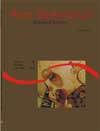<b>Parâmetros populacionais e simulação do rendimento por recruta de <em>Salminus brasiliensis</em> (Cuvier, 1816) do alto rio Paraná</b> - DOI: 10.4025/actascibiolsci.v26i3.1593
Resumo
O dourado Salminus brasiliensis é uma espécie explorada por todos os tipos de pesca na bacia do rio Paraná e sua captura tem sido diminuída nos últimos anos. Nesse contexto, o presente trabalho tem por objetivo simular o rendimento por recruta de S. brasiliensis partindo da necessidade de rever a regulamentação de pesca, na tentativa de conservar os estoques da espécie. Para realizar o trabalho, foram usados os dados de captura junto aos pescadores profissionais do município de Porto Rico, Estado do Paraná, no período de outubro de 1986 a setembro de 1988, amostrados com redes de espera, com linha e anzol, com espinhéis e com anzóis de galho. A simulação do rendimento por recruta foi realizada considerando diversos cenários de mortalidade por pesca e comprimentos mínimos de captura, a partir do modelo de rendimento de equilíbrio de Beverton e Holt, modificado por Jones. A simulação mostrou um incremento no rendimento por recruta para os comprimentos mínimos de 60 e de 65cm, sugerindo que mudanças na legislação em vigor devem ser consideradas. Além disso, sugerimos mudanças nos procedimentos operacionais das barragens, na época de reprodução da espécie, e proteção da pesca nos locais de desova e nos criadouros naturaisDownloads
DECLARAÇÃO DE ORIGINALIDADE E DIREITOS AUTORAIS
Declaro que o presente artigo é original, não tendo sido submetido à publicação em qualquer outro periódico nacional ou internacional, quer seja em parte ou em sua totalidade.
Os direitos autorais pertencem exclusivamente aos autores. Os direitos de licenciamento utilizados pelo periódico é a licença Creative Commons Attribution 4.0 (CC BY 4.0): são permitidos o compartilhamento (cópia e distribuição do material em qualqer meio ou formato) e adaptação (remix, transformação e criação de material a partir do conteúdo assim licenciado para quaisquer fins, inclusive comerciais.
Recomenda-se a leitura desse link para maiores informações sobre o tema: fornecimento de créditos e referências de forma correta, entre outros detalhes cruciais para uso adequado do material licenciado.












1.png)




3.png)













